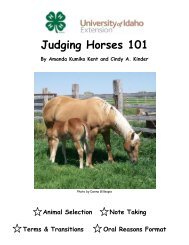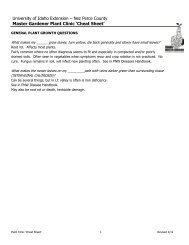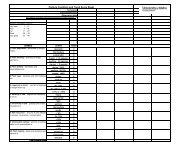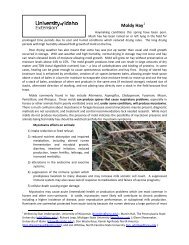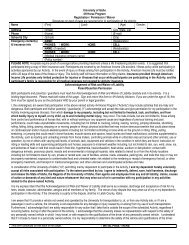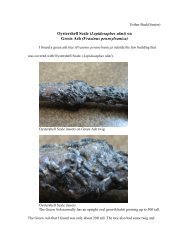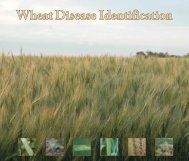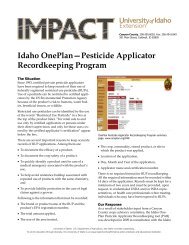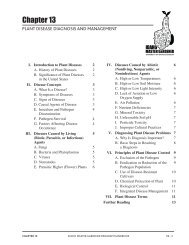Black Flies - Biology and Control - University of Idaho Extension (Ver ...
Black Flies - Biology and Control - University of Idaho Extension (Ver ...
Black Flies - Biology and Control - University of Idaho Extension (Ver ...
Create successful ePaper yourself
Turn your PDF publications into a flip-book with our unique Google optimized e-Paper software.
natural enemies<br />
Numerous fish <strong>and</strong> birds (such as trout <strong>and</strong> ducks) feed on the adult <strong>and</strong> larval stages <strong>of</strong> black flies, but<br />
little if anything can be done to practically manipulate populations <strong>of</strong> these natural predators in ways that<br />
enhance their impact. In areas where they are abundant, black flies can be critical part <strong>of</strong> the diet <strong>of</strong> fish<br />
<strong>and</strong> birds. Hence, pest control programs for black flies can have unintended harmful impacts on<br />
ecosystems.<br />
A more promising natural enemy is a tiny parasitic nematode, Gastromermis viridis [Mermithidae],<br />
known from prior surveys in the irrigation canals <strong>of</strong> south-central <strong>Idaho</strong>. This roundworm penetrates the<br />
body wall <strong>of</strong> larval black flies where it feeds internally, eventually growing so large that it entirely fills<br />
the internal body cavity <strong>of</strong> the black fly (Figure 10). The parasite kills the black fly when the juvenile<br />
worm exits from the larva. In other regions <strong>of</strong> the US, worms can persist into the pupal <strong>and</strong> adult stages<br />
<strong>of</strong> the black fly before killing their host.<br />
Figure 10. <strong>Black</strong> fly larval cadaver (dark, thicker<br />
body form at top <strong>of</strong> photo) following emergence <strong>of</strong><br />
parasitic nematode (thin, long coiled worm at bottom<br />
<strong>of</strong> photo).<br />
In the Twin Falls area where they were studied, nematode-infected black fly larvae usually were first<br />
detected in canals during the initial June generation. Parasitism increased through the season <strong>and</strong><br />
reached larval kill rates <strong>of</strong> nearly 100% at some sites during August <strong>and</strong> September. The highest attack<br />
rates were at the downstream parts <strong>of</strong> canals most distantly located from reservoir outlets. In spite <strong>of</strong><br />
these extreme larval kill rates, adult fly populations never declined below levels pestiferous to sheep.<br />
Much more research will be required before we can directly use nematodes to control black flies. This<br />
worm is not available commercially for mass-release into canals.<br />
habitat management<br />
Because black flies require running waters for egg-to-pupal development, immature black flies can be<br />
killed by manipulating water flows. For example, water levels in irrigation canals could be raised <strong>and</strong><br />
lowered at regular intervals during the summer so as to str<strong>and</strong> black fly eggs, larvae <strong>and</strong> pupae on<br />
vegetation above the water line. Alternatively, water could be impounded into still, non-flowing pools<br />
between canal gates; several consecutive days <strong>of</strong> interrupted flow would be required because larvae <strong>of</strong><br />
Simulium vittatum can survive (but not complete development) a few days in still, stagnant water. Even<br />
more extreme, water flow into canals temporarily could be stopped <strong>and</strong> the system allowed to run<br />
completely dry, thereby totally eradicating the immature pest population.<br />
Page 10 <strong>of</strong> 12



